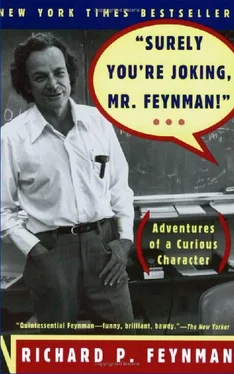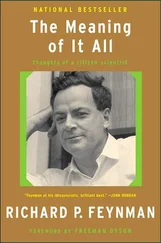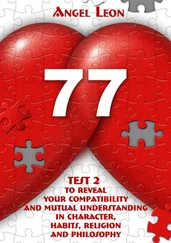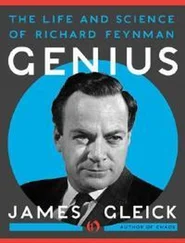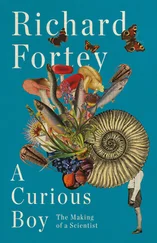So I got up and said, “I’m asking this question for Martin Block: What would be the consequences if the parity rule was wrong?”
Murray Gell-Mann often teased me about this, saying I didn’t have the nerve to ask the question for myself. But that’s not the reason. I thought it might very well be an important idea.
Lee, of Lee and Yang, answered something complicated, and as usual I didn’t understand very well. At the end of the meeting, Block asked me what he said, and I said I didn’t know, but as far as I could tell, it was still open—there was still a possibility. I didn’t think it was likely, but I thought it was possible.
Norm Ramsey asked me if I thought he should do an experiment looking for parity law violation, and I replied, “The best way to explain it is, I’ll bet you only fifty to one you don’t find anything.”
He said, “That’s good enough for me.” But he never did the experiment.
Anyway, the discovery of parity law violation was made, experimentally, by Wu, and this opened up a whole bunch of new possibilities for beta decay theory, It also unleashed a whole host of experiments immediately after that. Some showed electrons coming out of the nuclei spun to the left, and some to the right, and there were all kinds of experiments, all kinds of interesting discoveries about parity. But the data were so confusing that nobody could put things together.
At one point there was a meeting in Rochester—the yearly Rochester Conference. I was still always behind, and Lee was giving his paper on the violation of parity. He and Yang had come to the conclusion that parity was violated, and flow he was giving the theory for it.
During the conference I was staying with my sister in Syracuse. I brought the paper home and said to her, “I can’t understand these things that Lee and Yang are saying. It’s all so complicated.”
“No,” she said, “what you mean is not that you can’t understand it, but that you didn’t invent it. You didn’t figure it out your own way, from hearing the clue. What you should do is imagine you’re a student again, and take this paper upstairs, read every line of it, and check the equations. Then you’ll understand it very easily.”
I took her advice, and checked through the whole thing, and found it to be very obvious and simple. I had been afraid to read it, thinking it was too difficult.
It reminded me of something I had done a long time ago with left and right unsymmetrical equations, Now it became kind of clear, when I looked at Lee’s formulas, that the solution to it all was much simpler: Everything comes out coupled to the left. For the electron and the muon, my predictions were the same as Lee’s, except I changed some signs around. I didn’t realize it at the time, but Lee had taken only the simplest example of muon coupling, and hadn’t proved that all muons would be full to the right, whereas according to my theory, all muons would have to be full automatically. Therefore, I had, in fact, a prediction on top of what he had. I had different signs, but I didn’t realize that I also had this quantity right.
I predicted a few things that nobody had experiments for yet, but when it came to the neutron and proton, I couldn’t make it fit well with what was then known about neutron and proton coupling: it was kind of messy.
The next day, when I went back to the meeting, a very kind man named Ken Case, who was going to give a paper on something, gave me five minutes of his allotted time to present my idea. I said I was convinced that everything was coupled to the left, and that the signs for the electron and muon are reversed, but I was struggling with the neutron. Later the experimenters asked me some questions about my predictions, and then I went to Brazil for the summer.
When I came back to the United States, I wanted to know what the situation was with beta decay. I went to Professor Wu’s laboratory at Columbia, and she wasn’t there, but another lady was there who showed me all kinds of data, all kinds of chaotic numbers that didn’t fit with anything. The electrons, which in my model would have all come out spinning to the left in the beta decay, came out on the right in some cases. Nothing fit anything.
When I got back to Caltech, I asked some of the experimenters what the situation was with beta decay. I remember three guys, Hans Jensen, Aaldert Wapstra, and Felix Boehm, sitting me down on a little stool, and starting to tell me all these facts: experimental results from other parts of the country, and their own experimental results. Since I knew those guys, and how careful they were, I paid more attention to their results than to the others. Their results, alone, were not so inconsistent; it was all the others plus theirs.
Finally they get all this stuff into me, and they say, “The situation is so mixed up that even some of the things they’ve established for years are being questioned—such as the beta decay of the neutron is S and T. It’s so messed up. Murray says it might even be V and A.”
I jump up from the stool and say, “Then I understand EVVVVVERYTHING!”
They thought I was joking. But the thing that I had trouble with at the Rochester meeting—the neutron and proton disintegration: everything fit but that, and if it was V and A instead of S and T, that would fit too. Therefore I had the whole theory!
That night I calculated all kinds of things with this theory. The first thing I calculated was the rate of disintegration of the muon and the neutron. They should be connected together, if this theory was right, by a certain relationship, and it was right to 9 percent. That’s pretty close, 9 percent. It should have been more perfect than that, but it was close enough.
I went on and checked some other things, which fit, and new things fit, new things fit, and I was very excited. It was the first time, and the only time, in my career that I knew a law of nature that nobody else knew. (Of course it wasn’t true, but finding out later that at least Murray Gell-Mann—and also Sudarshan and Marshak—had worked out the same theory didn’t spoil my fun.)
The other things I had done before were to take somebody else’s theory and improve the method of calculating, or take an equation, such as the Schrodinger Equation, to explain a phenomenon, such as helium. We know the equation, and we know the phenomenon, but how does it work?
I thought about Dirac, who had his equation for a while—a new equation which told how an electron behaved—and I had this new equation for beta decay, which wasn’t as vital as the Dirac Equation, but it was good. It’s the only time I ever discovered a new law.
I called up my sister in New York to thank her for getting me to sit down and work through that paper by Lee and Yang at the Rochester Conference. After feeling uncomfortable and behind, now I was in; I had made a discovery, just from what she suggested. I was able to enter physics again, so to speak, and I wanted to thank her for that. I told her that everything fit, except for the 9 percent.
I was very excited, and kept on calculating, and things that fit kept on tumbling out: they fit automatically, without a strain. I had begun to forget about the 9 percent by now, because everything else was coming out right.
I worked very hard into the night, sitting at a small table in the kitchen next to a window. It was getting later and later—about 2:00 or 3:00 AM. I’m working hard, getting all these calculations packed solid with things that fit, and I’m thinking, and concentrating, and it’s dark, and it’s quiet … when suddenly there’s a TAC-TAC-TAC-TAC—loud, on the window. I look, and there’s this white face , right at the window, only inches away, and I scream with shock and surprise!
Читать дальше
